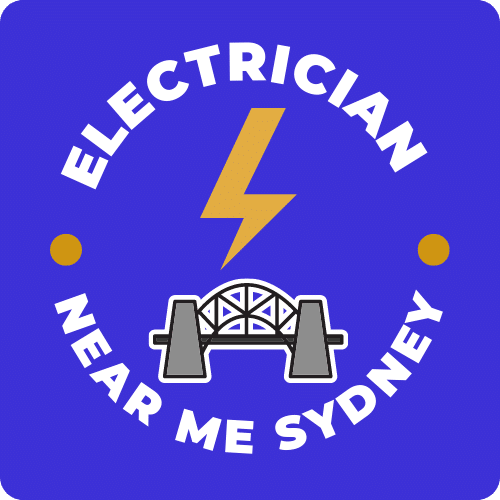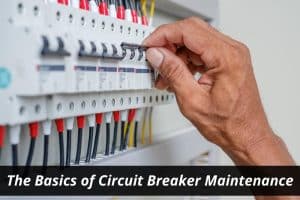The Basics of Circuit Breaker Maintenance
Circuit breakers are an essential component of any electrical system, but they can also be a source of trouble if not properly maintained. In this blog post, we’ll take a look at the basics of circuit breaker maintenance, so you can keep your electrical system up and running smoothly.
What is a circuit breaker and what does it do?
A circuit breaker is a device that is used to protect an electrical circuit from damage caused by overload or a short circuit. When there is an overload, the circuit breaker will automatically trip and open the circuit, preventing the flow of electricity. This protects the wiring from overheating and causing a fire. If there is a short circuit, the circuit breaker will also trip and open the circuit, but this time it will do so to prevent the flow of too much current which could cause an electrical fire.
Circuit breakers are an important part of any electrical system and should be tested regularly to ensure they are working properly. If you have any questions about circuit breakers or electrical maintenance, please contact a professional electrician.
How often should you maintain your circuit breakers, and why is it important to do so regularly?
Electrical maintenance is important to keep your circuit breakers working properly. Depending on the type of breaker, you may need to maintain it every few years. It is important to do this so that the breaker will continue to protect your home or business from electrical fires.
Circuit breakers are devices that protect your home or business from electrical fires. They work by interrupting the flow of electricity when there is an overload. This prevents the wiring in your home or business from overheating and catching fire.
There are two types of circuit breakers: main breakers and branch breakers. Main breakers are located in your main electrical panel, and they control all of the electricity in your home or business. Branch breakers are located in individual circuits, and they only control the electricity in that particular circuit.
Main breakers should be maintained every three to five years. You can check the manufacturer’s recommendation to see how often you should maintain your particular type of breaker.
To maintain a circuit breaker, you will need to clean it and check the connections. You can do this yourself if you are comfortable working with electricity. However, it is always best to hire a professional electrician to do this work for you.
Cleaning a circuit breaker is a simple process. First, turn off the power to the breaker. Then, remove the cover of the breaker. Use a brush or vacuum to clean the dust and debris from the inside of the breaker. Be sure to clean all of the connections as well. Once you have finished cleaning, replace the cover and turn on the power.
Checking the connections is also a simple process. First, turn off the power to the breaker. Then, remove the cover of the breaker. Inspect all of the connections to make sure they are tight and free of corrosion. If you see any loose or damaged connections, replace them with new ones. Once you have finished the inspection, replace the cover and turn on the power.
It is important to maintain your circuit breakers because they play a vital role in protecting your home or business from electrical fires. By keeping them clean and checking the connections regularly, you can be sure that they will continue to work properly.
What are some common problems that can occur with circuit breakers, and how can they be fixed?
Most people don’t think about their circuit breakers until they have a problem. But, like any other electrical component in your home, circuit breakers can experience issues that cause them to trip or fail. Here are some of the most common problems that can occur with circuit breakers, and how you can fix them.
1. Loose Electrical Connections
One of the most common causes of circuit breaker problems is loose electrical connections. Over time, the vibration from normal use can loosen the terminals that connect the breaker to the electrical panel. When this happens, the breaker may not make a good connection, which can cause it to trip or even fail completely.
To fix this problem, you’ll need to tighten the terminals that connect the breaker to the electrical panel. You can do this with a screwdriver or a wrench, depending on the type of terminal. Once you’ve tightened the terminals, turn on the breaker to see if it trips. If it does, turn it off and check the connections again.
2. Worn Out Breakers
Another common problem with circuit breakers is that they simply wear out over time. The contacts inside the breaker can become pitted and corroded, which can cause them to arc or burn. This can eventually lead to the breaker failing completely.
If you suspect that your breaker is worn out, you’ll need to replace it with a new one. You can purchase replacement circuit breakers at most hardware stores. Be sure to get one that is compatible with your electrical panel.
3. Electrical Overloads
One of the most common reasons circuit breakers trip is because of an electrical overload. This can happen if you try to draw too much power from the breaker, or if there is a short circuit somewhere in the electrical system.
To fix this problem, you’ll need to identify the source of the electrical overload and correct it. If you’re drawing too much power from the breaker, you’ll need to redistribute the load to another breaker. If there is a short circuit somewhere in the system, you’ll need to find and repair it.
4. Electrical Surges
Another reason circuit breakers trip is because of electrical surges. These can be caused by lightning strikes, power outages, or other events that cause a sudden spike in the electrical system.
To protect your home from electrical surges, you’ll need to install surge protection devices on your circuit breaker panel. These devices will absorb the excess energy from the surge and prevent it from damaging your electrical system.
5. Tripped Breakers
Sometimes, circuit breakers trip for no apparent reason. This can be frustrating, but it’s usually not a cause for concern. If a breaker trips, simply reset it and see if it trips again. If it does, there may be an issue with the breaker itself and you’ll need to replace it.
Circuit breakers are an important part of your home’s electrical system. By understanding the most common problems that can occur with them, you can be prepared to fix them when they do occur.
How can you prevent electrical fires in your home by properly maintaining your circuit breakers?
Electrical fires are one of the leading causes of house fires. In order to prevent electrical fires, it is important to properly maintain your circuit breakers.
One way to do this is to have a certified electrician check your breaker box at least once a year. This will ensure that all of the connections are tight and that there is no corrosion.
Another way to prevent electrical fires is to make sure that you do not overload your circuits. This can be done by having a qualified electrician add more circuits if needed, or by simply unplugging appliances when they are not in use.
Finally, it is important to keep flammable materials away from any electrical outlets or appliances. This includes things like newspapers, magazines, and curtains. If an electrical fire does start, these materials can help it spread quickly.
What should you do if there is an electrical emergency in your home and the power goes out?
Electrical emergencies can happen at any time, often without warning. If you experience a power outage in your home, it’s important to take the proper precautions to ensure your safety.
If the power goes out, always assume that the wires are live and dangerous. Do not touch any downed or low-hanging wires. Do not attempt to move or remove fallen tree limbs or other debris that may be resting on power lines.
Call your local utility company to report the outage and find out when power is expected to be restored. In the meantime, unplug all sensitive electronic equipment such as computers, TVs and stereos to prevent damage from power surges when service is restored. Use battery-operated lamps or flashlights for lighting instead of candles to avoid the risk of fire.
If you use a portable generator, never operate it indoors or in an enclosed space such as a garage. Be sure to follow the manufacturer’s instructions for safe operation.
If you experience an electrical shock, immediately call 911 for medical assistance. Do not attempt to move the person until professional help arrives. If possible, turn off the power source before moving the victim away from it. Electrical shocks can cause burns, so be careful not to touch any burned areas on the victim’s body.
Electrical emergencies can be dangerous, but following these simple safety tips can help keep you and your family safe.

